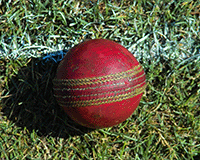Planning judge at sixes and sevens over sixes and fours
A High Court judge today had the sporting equivalent of a “Who are the Beatles?” moment, as she asked a lawyer to explain what he meant by “sixes and fours” in the game of cricket.
As she heard a dispute over plans to add a residential storey to a prized 150-year-old blacksmith’s forge that it is claimed will render the property more vulnerable to “sixes and fours” from the cricket ground next door, Lang J interrupted proceedings to confess: “I don’t play cricket.”
It fell to Robert Fookes, representing the East Meon Forge and Cricket Ground Protection Association – which was set up to try and thwart the development – to explain.
A High Court judge today had the sporting equivalent of a “Who are the Beatles?” moment, as she asked a lawyer to explain what he meant by “sixes and fours” in the game of cricket.
As she heard a dispute over plans to add a residential storey to a prized 150-year-old blacksmith’s forge that it is claimed will render the property more vulnerable to “sixes and fours” from the cricket ground next door, Lang J interrupted proceedings to confess: “I don’t play cricket.”
It fell to Robert Fookes, representing the East Meon Forge and Cricket Ground Protection Association – which was set up to try and thwart the development – to explain.
“A six is where the ball goes over the boundary without hitting the ground,” he said. “A four is where it bounces along the ground and makes it to the boundary without being stopped by a fielder.”
Mr Fookes argued that the old Forge in the village of East Meon dates back to 1869 and is considered one of the area’s treasures by Hampshire county council.
But he said that the plans for a residential first floor, which will include skylights and French windows among its timber and glazing, will increase the risk of damage from cricket balls hit in its direction.
He is seeking to have the planning permission granted by East Hampshire district douncil quashed for what would be the second time, after the council earlier conceded that its first consent should not stand.
On its website, the EMFCGPA says that sixes and fours hit onto the Forge land, including its roof, are a regular feature of games played on the adjacent recreation ground, which has been used for cricket since 1894. It says it is obvious that there is an increased risk of damage and injury arising from the proposed development, which could expose it to compensation claims.
The group says that suggestions including a high net and a local rule to the effect that sixes and fours hit in that direction should not count are unacceptable, while the offer of the Forge’s owners to agree not to bring any claim would not bind any successor in title.
However, the Forge’s owners, Jamie Croucher and his father Ian, have hit back with their own website detailing what they say is the truth about the Forge. They say that their project is being overseen by television architect George Clarke and will be an “absolutely stunning” asset to the village.
The Crouchers see no reason why anything should change, adding that the Forge and the cricket ground have peaceably coexisted for more than a century.
Lang J is to reserve judgment in the case, which may give her the opportunity to brush up on the finer details of cricket.
The Queen on the application of East Meon Forge & Cricket Ground Protection Association v East Hampshire District Council Planning Court (Lang J) 23 October 2014
Robert Fookes for the claimant
David Forsdick QC for the defendant











